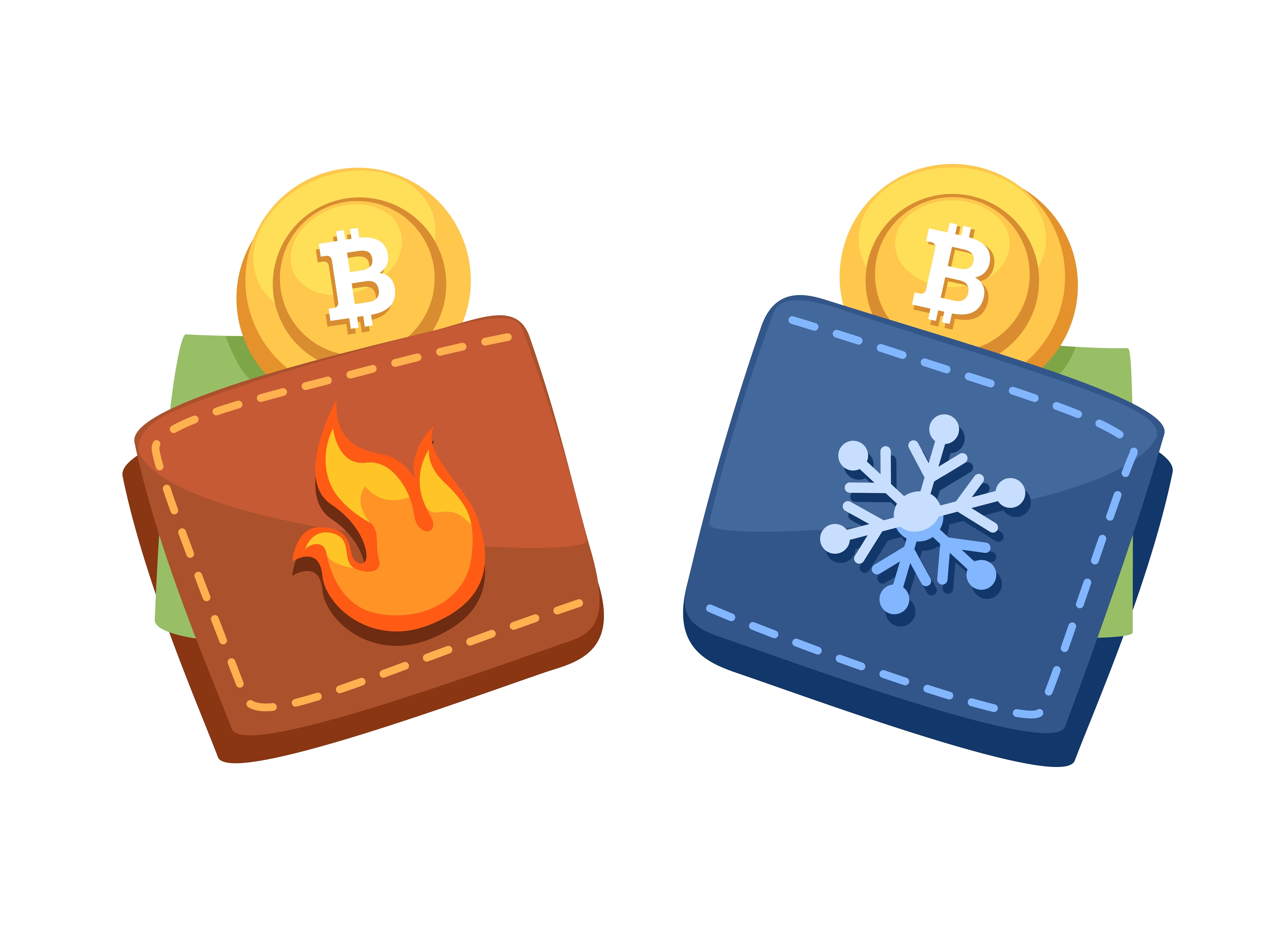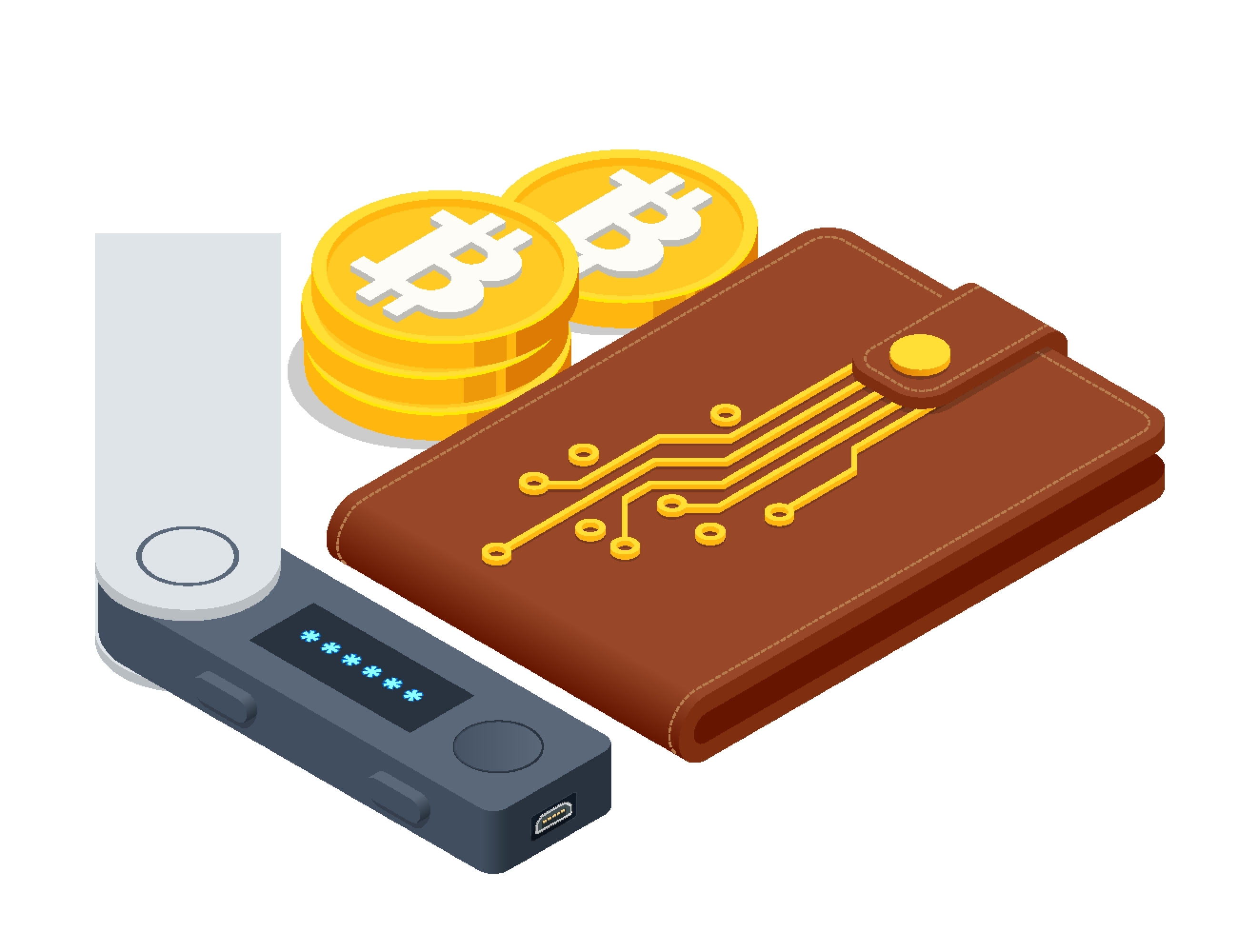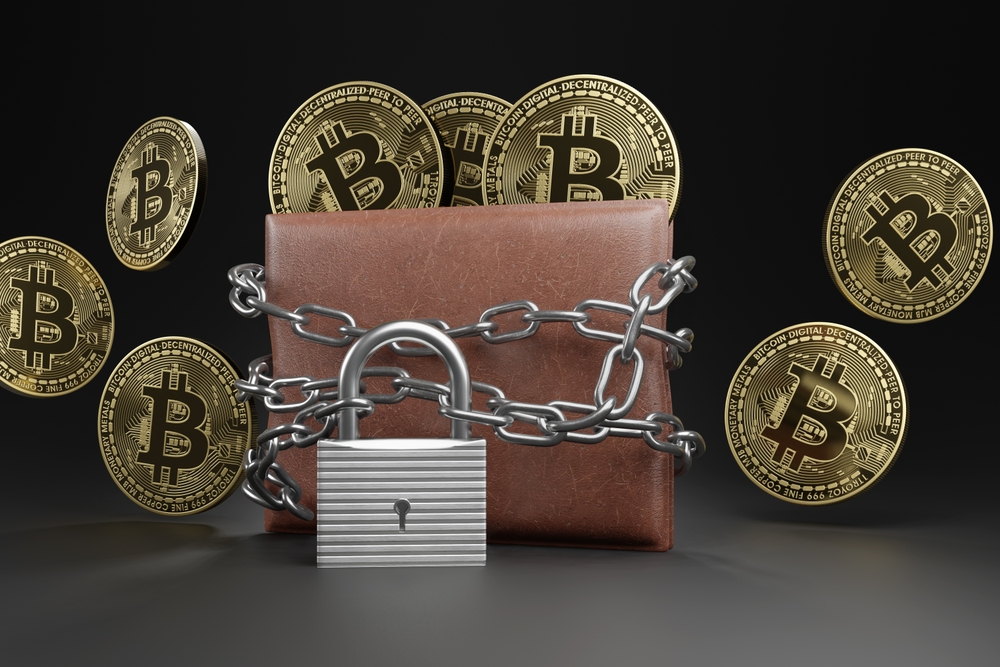Cold Wallets vs. Hot Wallets: Best Practices for Crypto Security Post-FTX Collapse

Have you ever found yourself tossing and turning at night, worrying about the safety of your crypto investments, especially after the earth-shaking collapse of FTX? If so, you’re definitely not alone. This guide is going to be your new best friend as we unravel the world of cold and hot wallets. Together, we’ll discover how these two guardians can offer your digital assets the protection they dearly need in a world that can sometimes feel a bit like the wild west. We’ll tap into some expert insights and learn how to reinforce our crypto defenses to weather any storm that comes our way. Ready to turn your crypto security woes into a fortress of calm and confidence? Let’s get the ball rolling on securing your digital treasure!
The FTX shakeup and rising crypto security concerns

Witnessing the FTX debacle unfold was like watching a suspense thriller for many crypto investors. But, unfortunately, the reality was far grimmer, highlighting an urgent need for enhanced security measures for our digital investments. If anything, the spectacle has turned the spotlight firmly on the importance of having a robust wallet setup. But fear not, this cloud has a silver lining.
A silver lining: Cold and Hot Wallets
Albeit the FTX crisis sent shockwaves through the crypto community, not all hope is lost. Enter the world of cold and hot wallets – your digital fortresses designed to ward off potential threats to your assets. Yet, the question remains: How do these wallets measure up, and can they truly offer the sanctity your digital currencies need?
Tapping into “nerdwallet.com” and “investopedia.com” resources for insights
Don’t just take my word for it. Both Nerdwallet.com and Investopedia shed light on the nuances of crypto wallets, offering a wealth of knowledge and insights into safeguarding your assets. By drawing from these resources, we can uncover the layers and examine the mechanisms at play behind cold and hot wallets. Ready to explore how to bulletproof your crypto investments? Let’s venture into the realm of wallet security with an open mind and a keen eye for detail.
What will we uncover in our journey through cold wallets, and how do they stand as the bastions of crypto security? Stay tuned to unlock the mysteries of the safest options available for storing your precious cryptocurrencies.
Cold Wallets: The Safe Bet for Crypto Security

With the digital age at its peak, securing our digital assets has become paramount. When it comes to cryptocurrency security, the conversation often leads us to an age-old debate: The Cold Wallet versus The Hot Wallet. Today, let’s zone in on why cold wallets are often hailed as the guardian angels of your crypto coins.
What Makes Cold Wallets Special?
Imagine a vault so impenetrable that not even the slickest of cyber-thieves could breach. That’s the essence of a cold wallet. But what exactly builds this fortress around them?
- Offline Storage: Cold wallets store your crypto assets offline, away from the prying eyes of online hackers.
- Physical Security: Whether it’s a hardware wallet or a paper wallet, physical possession is required to access the assets.
- No Third-party Risks: With cold wallets, you’re not reliant on a third party’s security measures. Your crypto’s safety is in your hands.
The Case for Cold Wallets
There’s a saying that trust is good, but control is better. The embodiment of this in the crypto world? Cold wallets. Let’s look at some compelling scenarios:
“An ounce of prevention is worth a pound of cure.” – Benjamin Franklin.
This quote resonates deeply with the principle of using cold wallets. It’s about taking control and preventing disaster before it strikes. By storing your investments in a cold wallet, you’re placing a robust barrier between your assets and potential online threats.
- Real-Life Incidences: Numerous horror stories of hot wallet securities being compromised pepper the landscape of cryptocurrency history. In contrast, breaches involving cold wallets are exceedingly rare and often involve physical theft, which is significantly harder to execute.
- Academic Studies: While specific studies might not be cited here, there’s a unanimous agreement in the cybersecurity realm about the superiority of offline storage methods in safeguarding digital assets.
But it’s not all black and white. While cold wallets offer superior security, they can sometimes inconvenience day-to-day transactions, especially for those who trade frequently.
So, does this mean you should steer clear of hot wallets entirely, especially if you value convenience? Well, let’s just say that every rose has its thorn, and in our next section, we’ll explore the allure and pitfalls of keeping your crypto in hot wallets.
Stay tuned. The answer might surprise you. Could the perfect balance between security and convenience lie ahead?
Hot Wallets: Convenient but Risky

In the dynamic world of cryptocurrencies, hot wallets have emerged as the go-to for those valuing convenience and immediate access. Unlike their cold counterparts, hot wallets are connected to the internet, providing a seamless way to manage and transact your digital assets swiftly. However, with great convenience comes increased risk.
The Pros of Hot Wallets
Why might someone opt for a hot wallet despite knowing its vulnerabilities? Here’s why:
- Instant Transactions: Hot wallets enable you to send and receive cryptocurrencies almost instantly, a crucial factor for active traders or those needing quick access to their assets.
- User-Friendly: They often boast user-friendly interfaces, making them accessible even to those new to the crypto scene.
- Wide Array of Choices: From mobile and web wallets to those integrated within cryptocurrency exchanges, there’s no shortage of options to suit every need.
The Flip Side: Security Risks
But here’s the rub: their constant internet connectivity. This feature, while convenient, turns hot wallets into tantalizing targets for cybercriminals. High-profile breaches have been a wake-up call for many, showcasing that the convenience of hot wallets can come at a steep price.
A notable example is the infamous 2014 Mt. Gox hack, where approximately 850,000 bitcoins were stolen, leaving users with empty pockets and shattered confidence. It serves as a stark reminder that when it comes to hot wallets, “convenient does not always mean safe.”
“Remember, in the world of crypto, accessibility comes with its risks. The balance of convenience and security is a tightrope walk.” – A Sage Crypto Enthusiast
Given the ease of access, hot wallets can be likened to carrying cash in your pocket. Just as you wouldn’t carry your life savings in your wallet for daily errands, relying solely on hot wallets for storing all your crypto assets might not be the wisest move.
So, how do you decide if the convenience of hot wallets is worth the risk? And more importantly, how do these concerns stack up against the fortified walls of cold wallets? Stay tuned as we explore the showdown between hot and cold wallets, unveiling which might just secure your crypto legacy.
Do you prioritize convenience over security, or is it the other way around? Let’s unlock the answer together in the next segment.
The Security Showdown: Cold Wallets vs. Hot Wallets

In the quest to fortify our digital treasures, the eternal debate between cold wallets and hot wallets takes center stage. Journey with me as we peel back the layers of this crucial discourse, vowing to address a question as old as modern cryptocurrency itself: which vault reigns supreme for your digital gold?
The Security Priority
At its heart, the showdown is not just about choosing between convenience and security – it’s about understanding the mechanics of protection each wallet type offers and recognizing the conditions under which they might falter.
- Cold Wallets: Picture this – your digital assets, locked away in a vault so secure that even the most sophisticated cyber thief can’t touch them. Cold wallets, essentially offline storage devices, promise this level of security. They are the Fort Knox of the crypto world. However, just like a fortress, they are not without their limitations. Accessibility is their Achilles’ heel. Need to move your assets quickly? This might not be your best bet.
- Hot Wallets: Now, imagine a wallet that moves with the rhythm of your life, always accessible, enabling transactions with the speed of a click. That’s the allure of hot wallets. But here’s the catch – being always online makes them a glittering lure for cyber predators. Yes, they embody convenience, but at what cost?
It’s a fine line we tread in the digital age, where every click could either be a step towards fortune or a pitfall into cyber oblivion. Consider this – “Security is not the absence of danger, but the presence of measures to counter it.” This axiom rings true especially in the context of digital asset storage. So, what does it really take to protect what’s yours in a space that’s as wild as the web?
“In the world of crypto, the choice between a hot wallet and a cold wallet can mean the difference between sleeping soundly or tossing and turning at night.”
This emotional dichotomy that spans the spectrum of cryptocurrency security is not just a matter of personal preference. It’s a critical decision that hinges on how we perceive and manage risk in a digital landscape that’s constantly evolving.
Yet, as we stand at this fork in the road, pondering our next move, one can’t help but wonder: is there a middle ground? A way to harness the convenience of hot wallets without compromising on the fortress-like security of cold wallets?
Stay tuned as we embark on the next segment of our exploration, where we dive into the world of USDT. Could it hold the keys to a harmonious balance between security and convenience? The answer might just surprise you.
Using USDT? Which Wallet is Right For You

Imagine this: you’re holding a significant amount of USDT, one of the most widely used stablecoins in the crypto landscape. The pivotal question now becomes: How do you decide where to store it? The debate between cold and hot wallets isn’t new, but when it comes to USDT, the answer isn’t as straightforward as one might think. Let’s navigate through the pros and cons of each, shall we?
Should You Use a Cold Wallet for USDT?
If security is your guiding star, cold wallets shine the brightest. Designed to keep your digital assets offline and out of reach from online threats, cold wallets are akin to a fortress for your USDT. They are essential for long-term holders who prioritize the safety of their investments over the need for quick transactions. Here’s why a cold wallet might be your go-to for USDT storage:
- Enhanced Security: With cyber-attacks becoming more sophisticated, the offline nature of cold wallets acts as a shield against unauthorized access.
- Ownership Control: Cold wallets give you full control over your keys—and consequently, your USDT. There’s a profound peace of mind in knowing that you’re the sole gatekeeper of your assets.
George Santayana famously said,
“Those who cannot remember the past are condemned to repeat it.”
In the context of cryptocurrency security, not leveraging the robust protection offered by cold wallets could be a misstep you want to avoid.
Or is a Hot Wallet a Better Option?
On the flip side, hot wallets are celebrated for their convenience. They make accessing and trading USDT as easy as a tap on your phone. For those who frequently trade or use USDT for transactions, the agility of hot wallets is unrivaled. But this convenience comes with its caveats:
- Online Risks: Being connected to the internet, hot wallets are more susceptible to hacks and phishing attacks. The very feature that makes them convenient also leaves them vulnerable.
- Dependency: With hot wallets, you’re often relying on third-party services, which could be a concern if the service experiences downtime or, worse, breaches.
The conundrum of choosing between cold and hot wallets for USDT storage boils down to a balancing act between security and convenience. Do you lean more towards safeguarding your assets, or do you value the flexibility of quick transactions? But, what if I told you that the decision-making doesn’t stop here?
Stay tuned as we further unravel the complexities of securing your digital assets in a world post-FTX collapse. Next up, we’re diving into what the pros are saying about cold vs. hot wallets and how you can leverage expert insights to bolster your crypto security strategy. Are you prioritizing your digital fortress or the speed of your trades? The answer might just shape your crypto journey.
Learning from the Experts

When stepping into the complex world of cryptocurrency storage, the wisdom shared by pros can significantly light up the path. Luckily, resources like Ledger Academy are at our disposal, offering a treasure trove of insights into making educated decisions between cold and hot wallets. But what exactly are the experts pointing out?
What the Pros are Saying
Many professionals in the field emphasize the importance of understanding the unique security features and potential vulnerabilities associated with each type of wallet. For instance, cold wallets, being offline, naturally pose a lower risk of hacking incidents. This aligns with the scenarios where highest levels of security are non-negotiable. On the flip side, the convenience offered by hot wallets for everyday transactions cannot be understated; their ability to integrate seamlessly with various blockchain applications makes them indispensable for active traders and crypto users.
Insights from Trusted Sources
Trusted sources like Ledger Academy shine a spotlight on the dualistic nature of crypto storage. By providing real-life examples and theoretical knowledge, these platforms help demystify the subject. They present studies and anecdotes that illustrate how cold wallets have successfully thwarted hacking attempts, while also acknowledging instances where hot wallets’ flexibility facilitated immediate trading and transactions, albeit with certain security compromises.
So, with all this expert knowledge and insight at our fingertips, how do we navigate the decision-making process? Choosing between a cold wallet’s fortress of solitude and a hot wallet’s bustling city life requires more than a simple coin toss. It demands a nuanced understanding of our personal priorities, transaction habits, and risk tolerance. But even equipped with all this expert advice and technical know-how, are we ready to make that choice?
The revelation dawns upon us: securing our crypto assets in the post-FTX world is more than just selecting the right type of wallet—it’s about continuously educating ourselves, staying alert, and adapting to the ever-evolving landscape of digital currencies. What lessons can we draw from the FTX collapse to ensure our wallet choice stands the test of time? The answer awaits, as we tie together the wisdom of the past with the innovations of tomorrow. Stay tuned.
Lessons from the FTX Collapse: Making the Best Wallet Choice

In light of the cataclysmic FTX saga, choosing the right wallet might seem like wading through a murky swamp at midnight – challenging and fraught with unseen hazards. Let’s shed some light on the matter, steering clear of the quicksand and into the realm of informed decisions for securing your digital fortune.
Choosing the Right Wallet: The Verdict
After dissecting the pros and cons of both cold and hot wallets, the path ahead is clearer but still requires careful consideration. In essence, the choice boils down to the balancing act between convenience and security. If the history of FTX has imparted anything, it’s the premium placed on the security of your assets. For those among us leaning towards the Fort Knox approach to crypto storage, cold wallets emerge as the superheroes. Encapsulating your digital wealth away from the tentacles of online threats, they stand firm as vaults of solitude for your cryptocurrencies.
Yet, for the daily traders or those who thrive on the pulse of the market, hot wallets provide the necessary agility with a caution – an Achilles’ heel, if you will – in the guise of security vulnerabilities. The mantra here? Vigilance and a constant recalibration of risks and benefits.
Always be Prepared
The twisty tale of FTX underscores a fundamental mantra for every crypto enthusiast – always be prepared. It’s not just about choosing the right wallet but adopting a mindset that blends caution with curiosity. Here’s a rundown on keeping your digital assets secure:
- Stay Informed: The crypto space is in constant flux. Regularly updating your knowledge on the latest security practices and wallet technology is non-negotiable.
- Use Multi-Factor Authentication: An extra layer of security never hurt anyone. Whether hot or cold wallet, ensure multi-factor authentication is in play.
- Diversify Storage: Don’t put all your crypto eggs in one basket. Diversifying storage across different wallet types can mitigate risks.
- Backup and Recovery: Always have a robust backup and recovery strategy for your wallets. Preparedness for the worst-case scenario ensures resilience.
In conclusion
As we turn the page on the FTX chapter, it’s clear that the world of cryptocurrency remains a vibrant frontier of opportunity, shadowed by pitfalls. Whether you choose the impenetrable fortresses of cold wallets or the swift currents of hot wallets, let security be your guiding star. The landscape is ever-evolving, and adapting to it requires an agile yet security-focused approach. Let’s move forward with the lessons learned, etching them into our digital legacy as we navigate the intricate tapestry of the cryptocurrency universe.
Remember, while the choice of a wallet might reflect individual needs and behaviors, our collective journey towards secure crypto holdings unites us. Be smart, be secure, and let the spirit of foresight lead the way.
